Year 8 Percentages Worksheets
Calculator Percentages
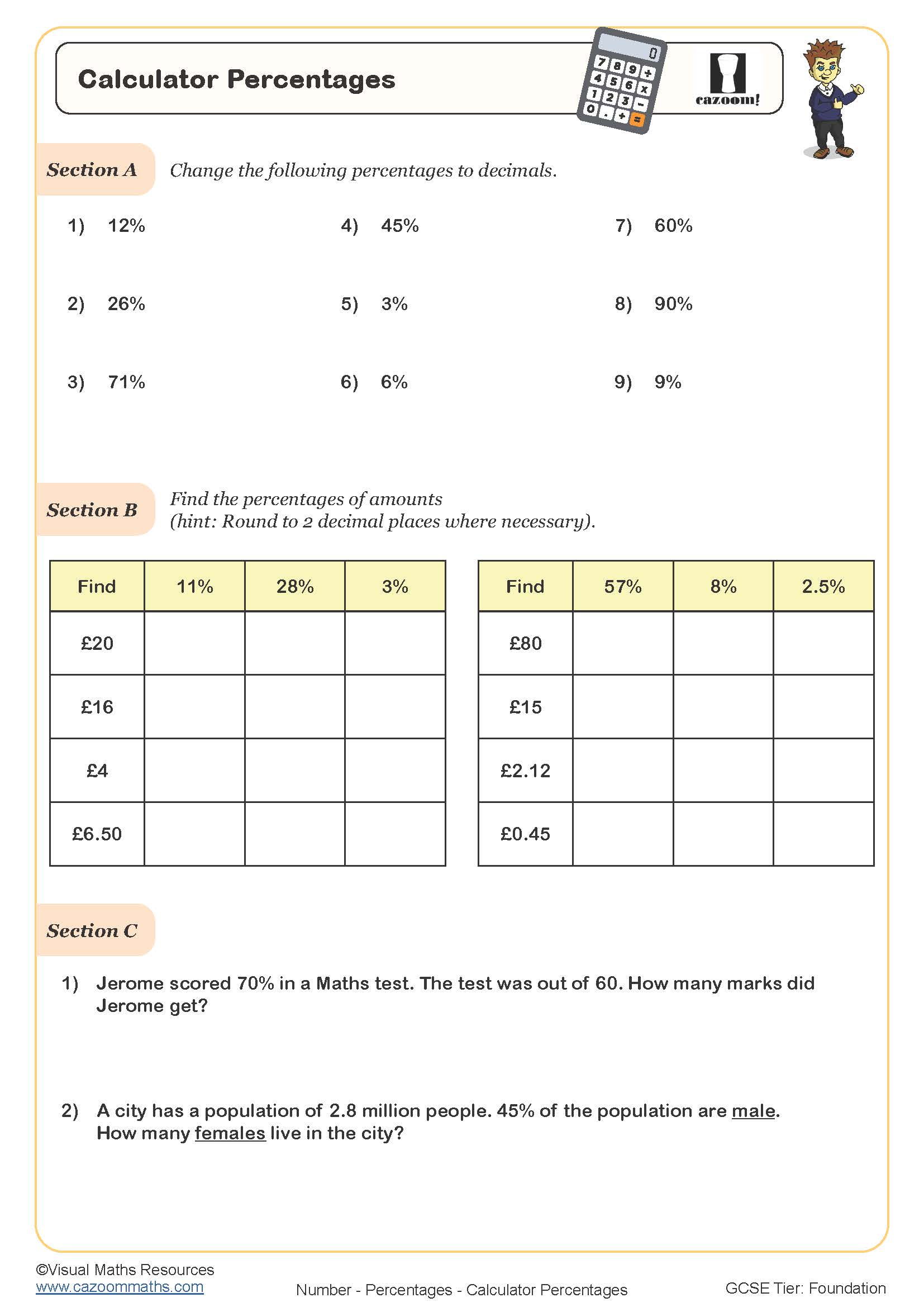
Express One Number as a Percentage of Another.
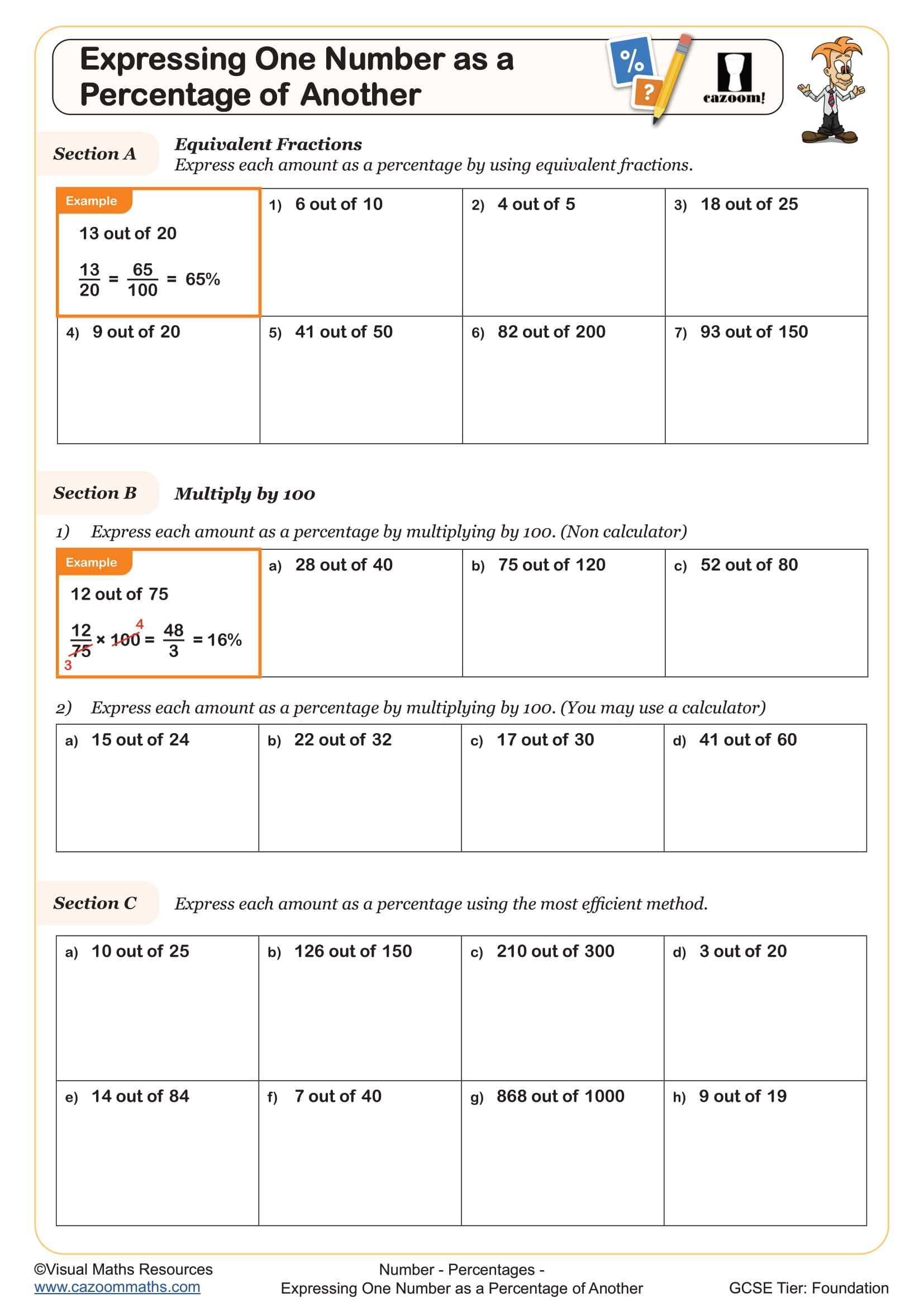
Mental Percentages
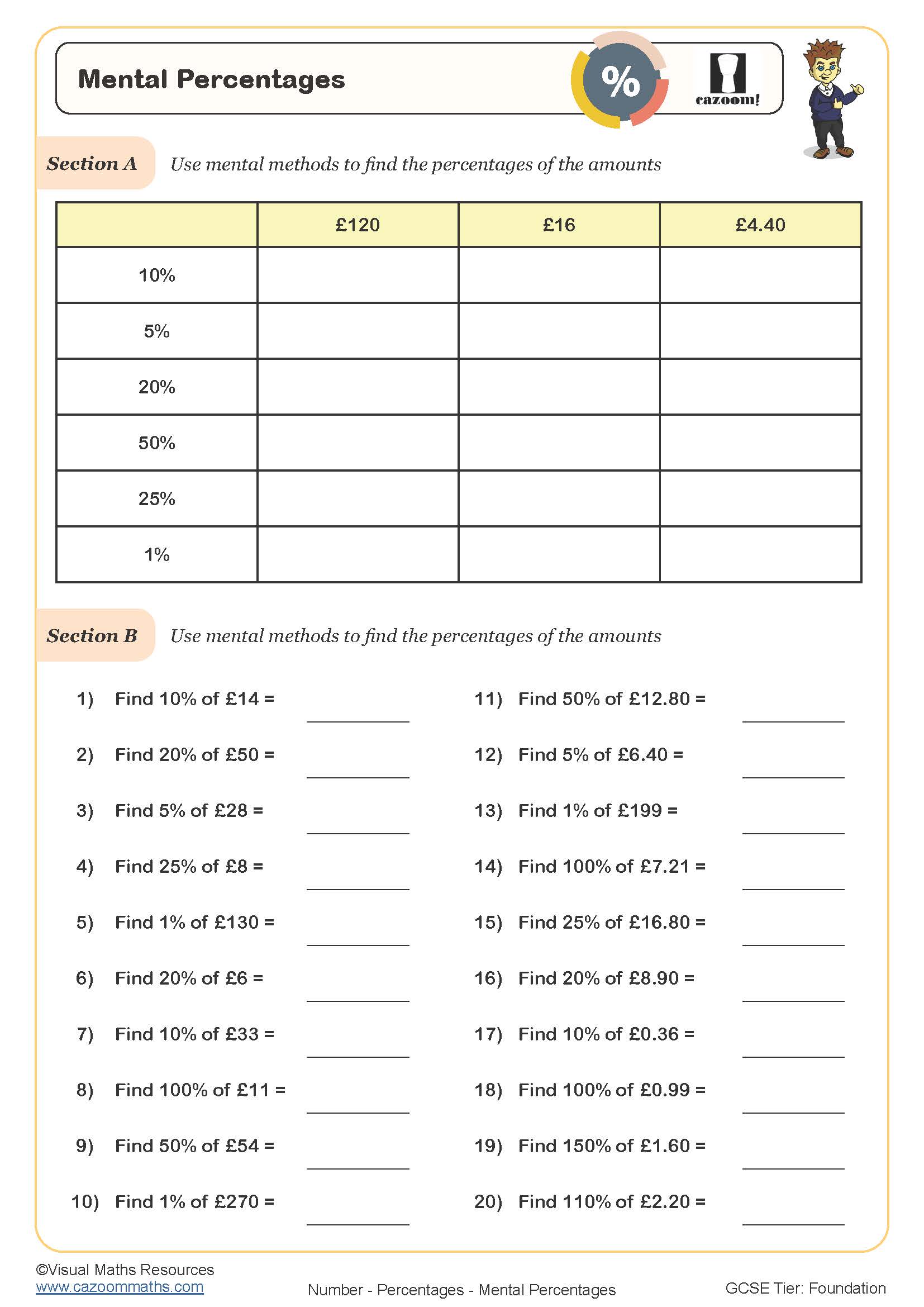
Percentage Change (A)
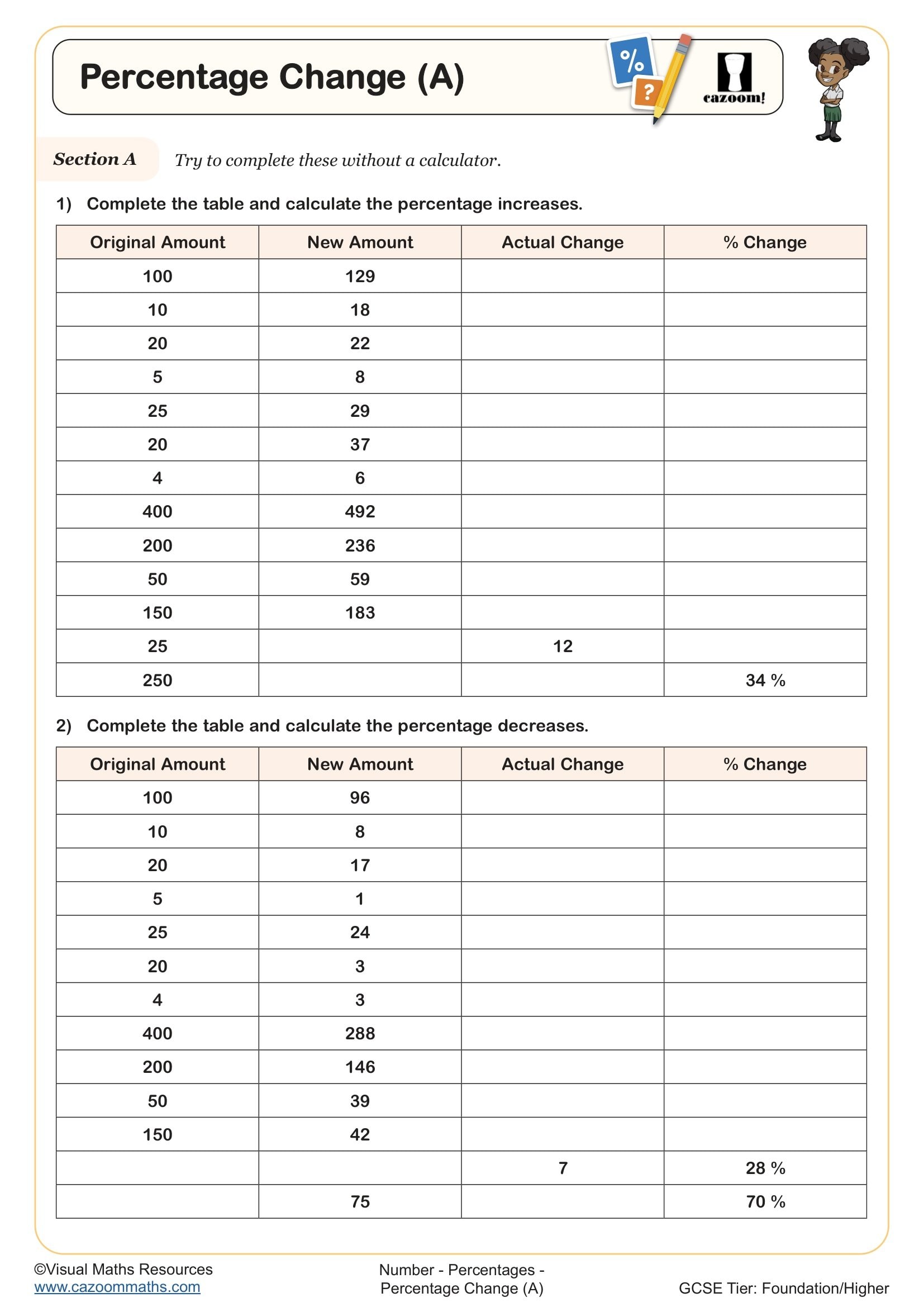
Percentage Decrease - Using a Bar Model
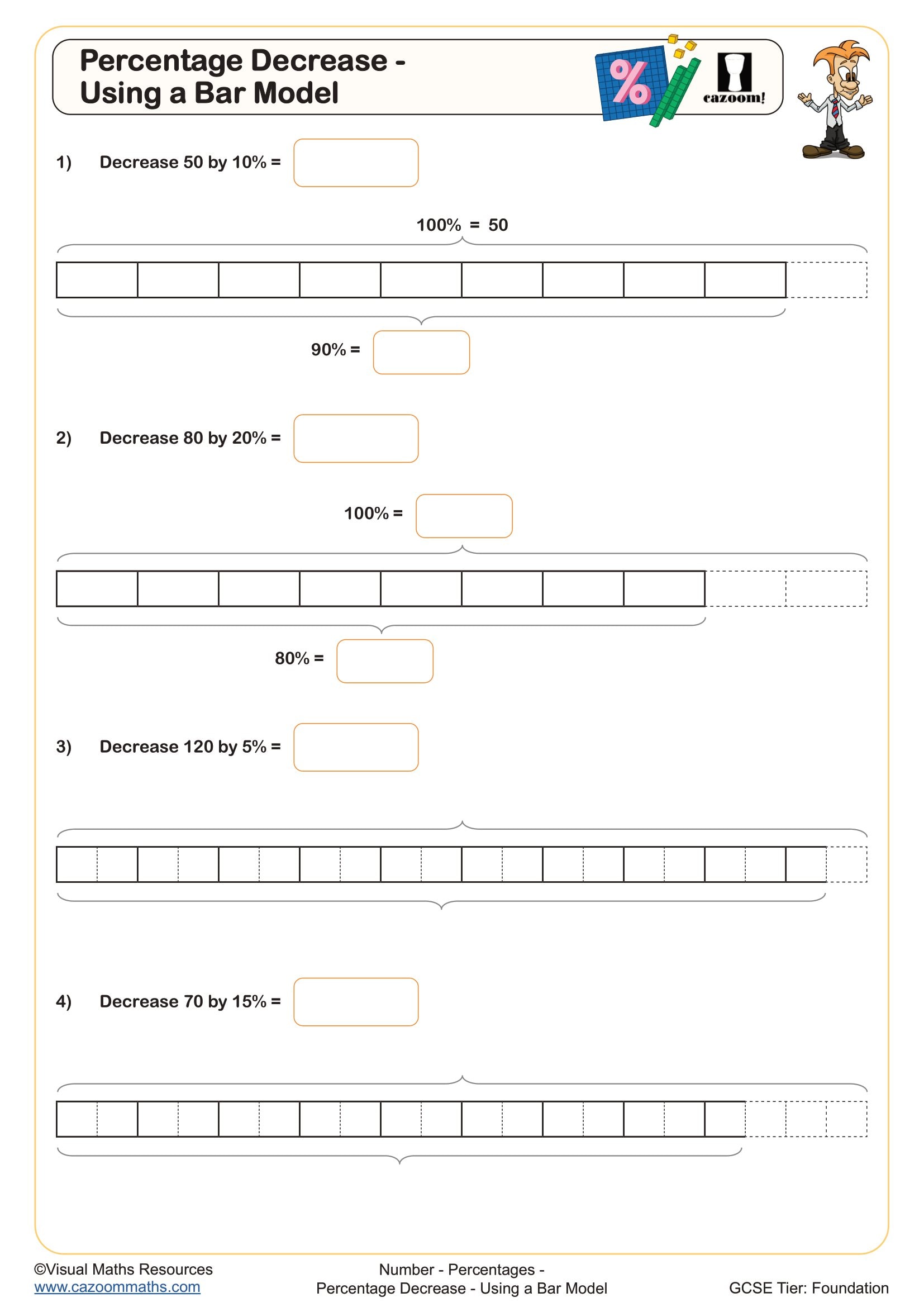
Percentage Increase - Using a Bar Model
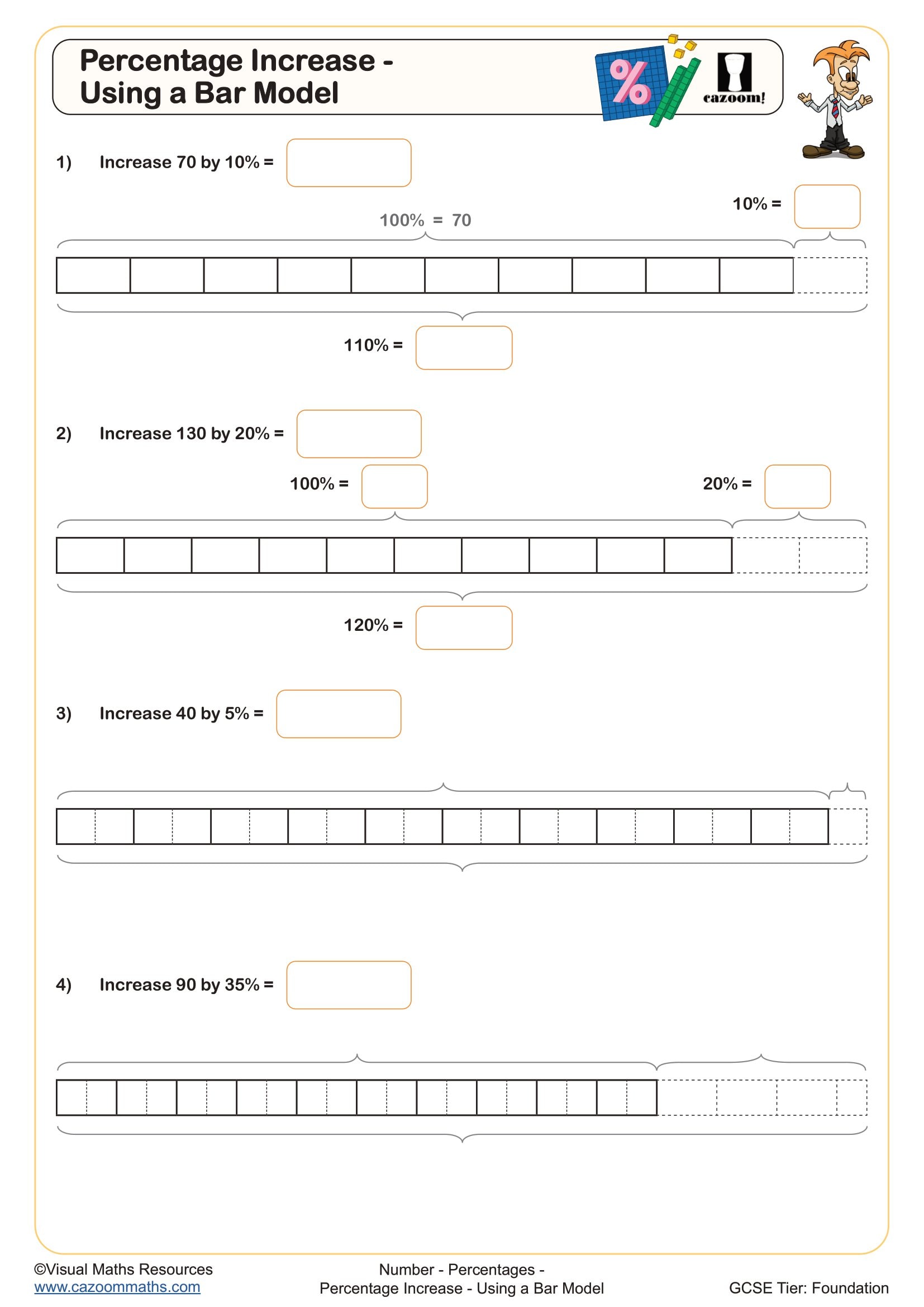
Percentage Increase and Decrease
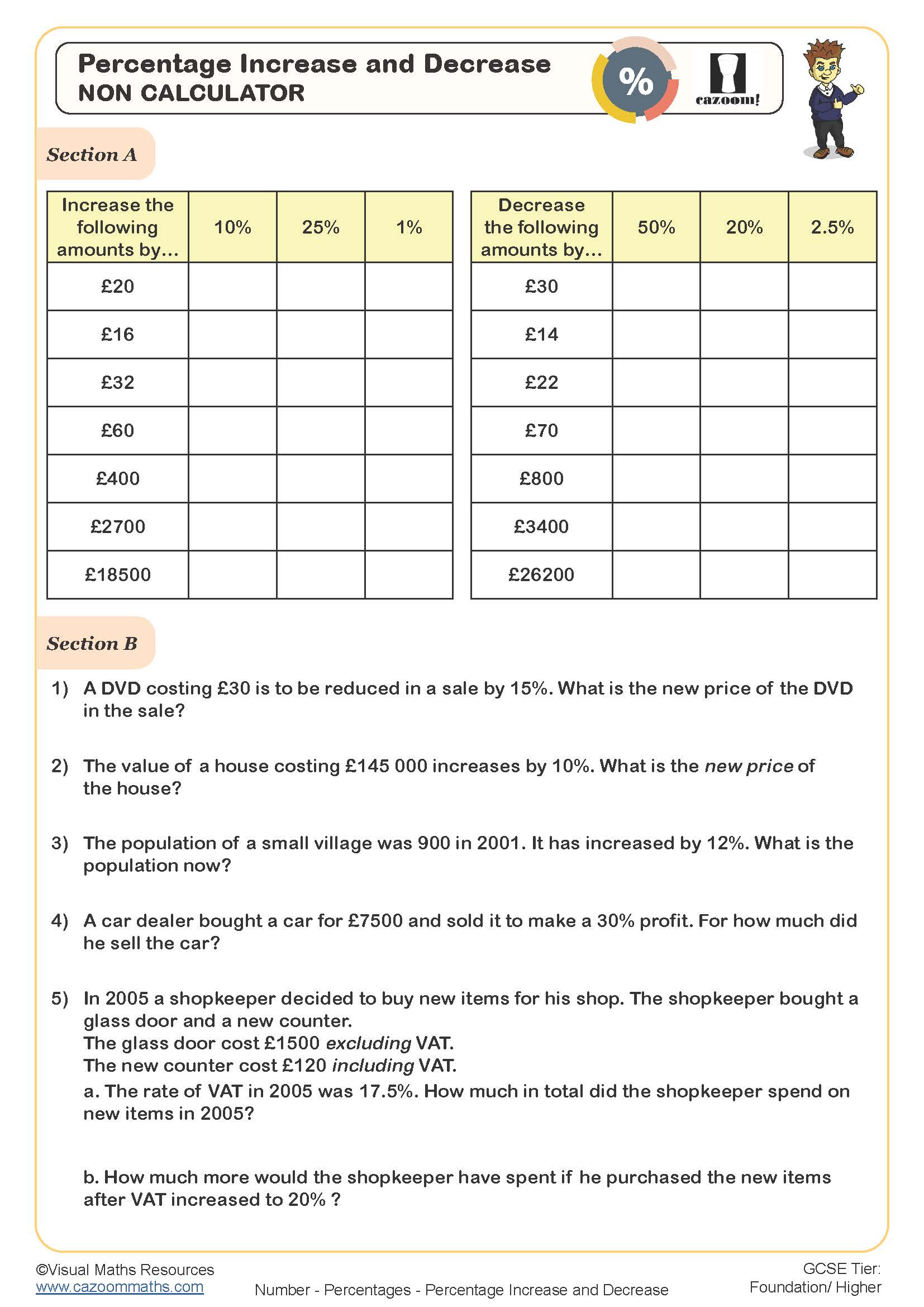
Percentage Profit and Loss
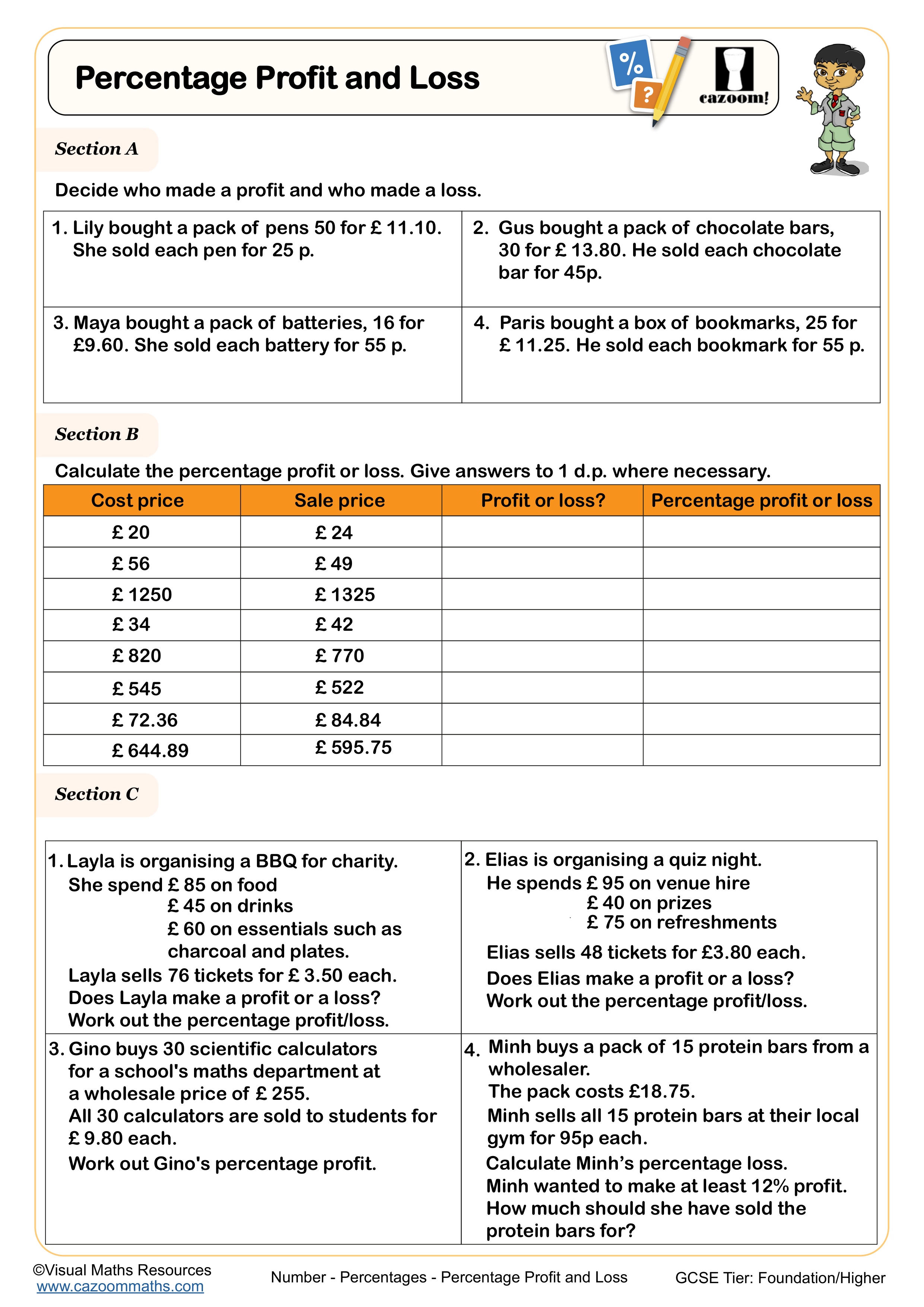
Percentages of Amounts - Using a Bar Model (A)
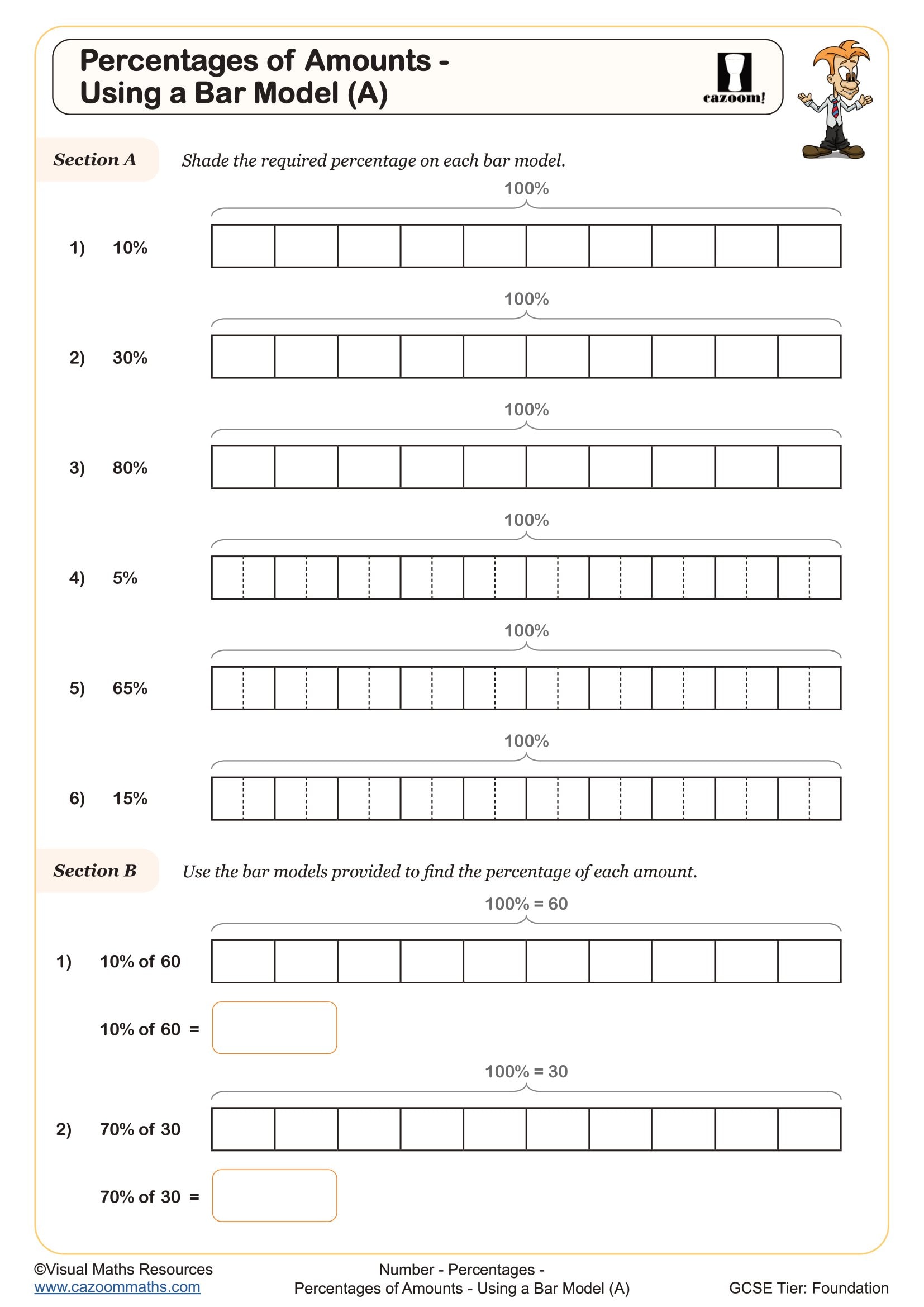
Percentages of Amounts - Using a Bar Model (B)
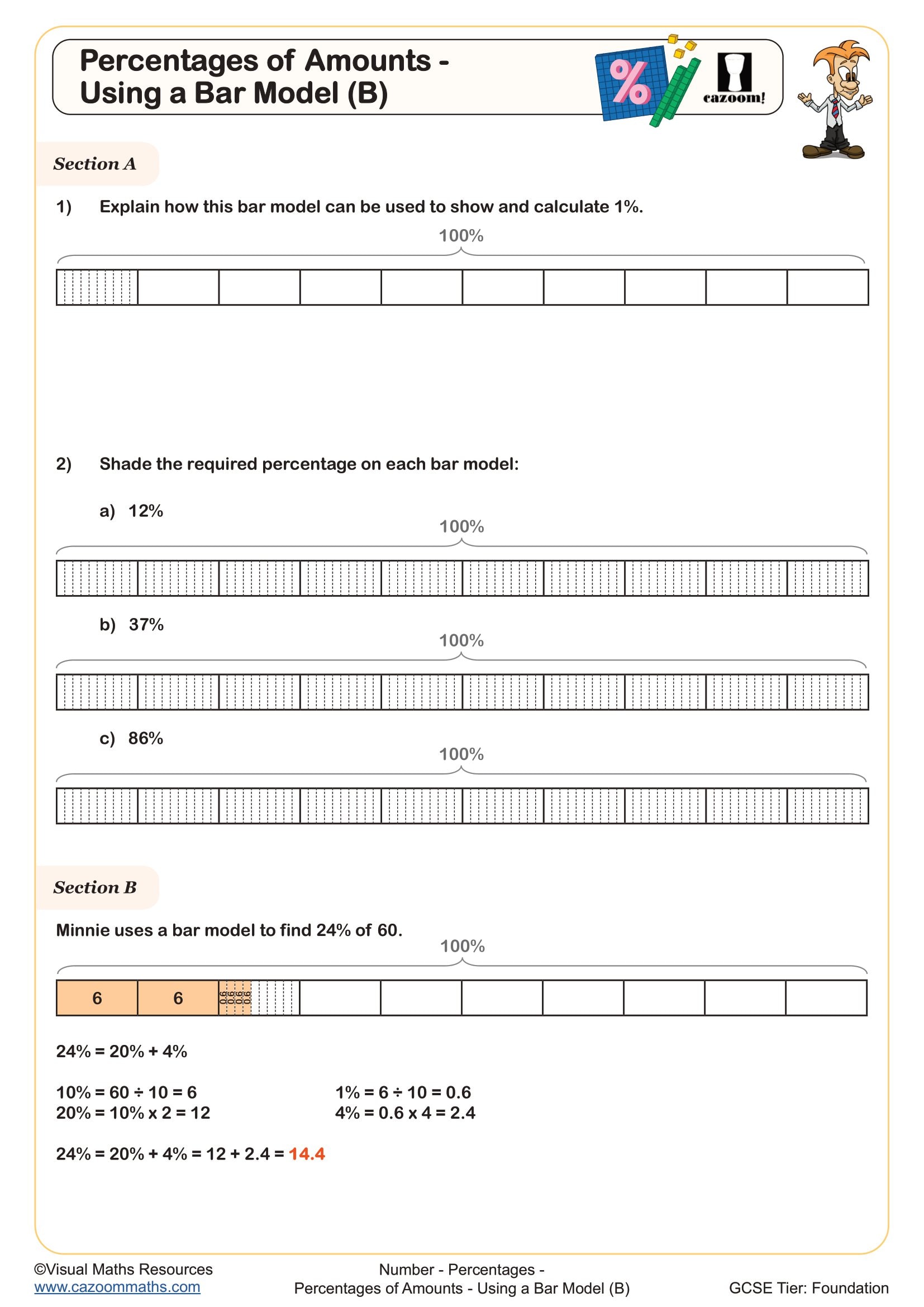
Percentages of Amounts (A)
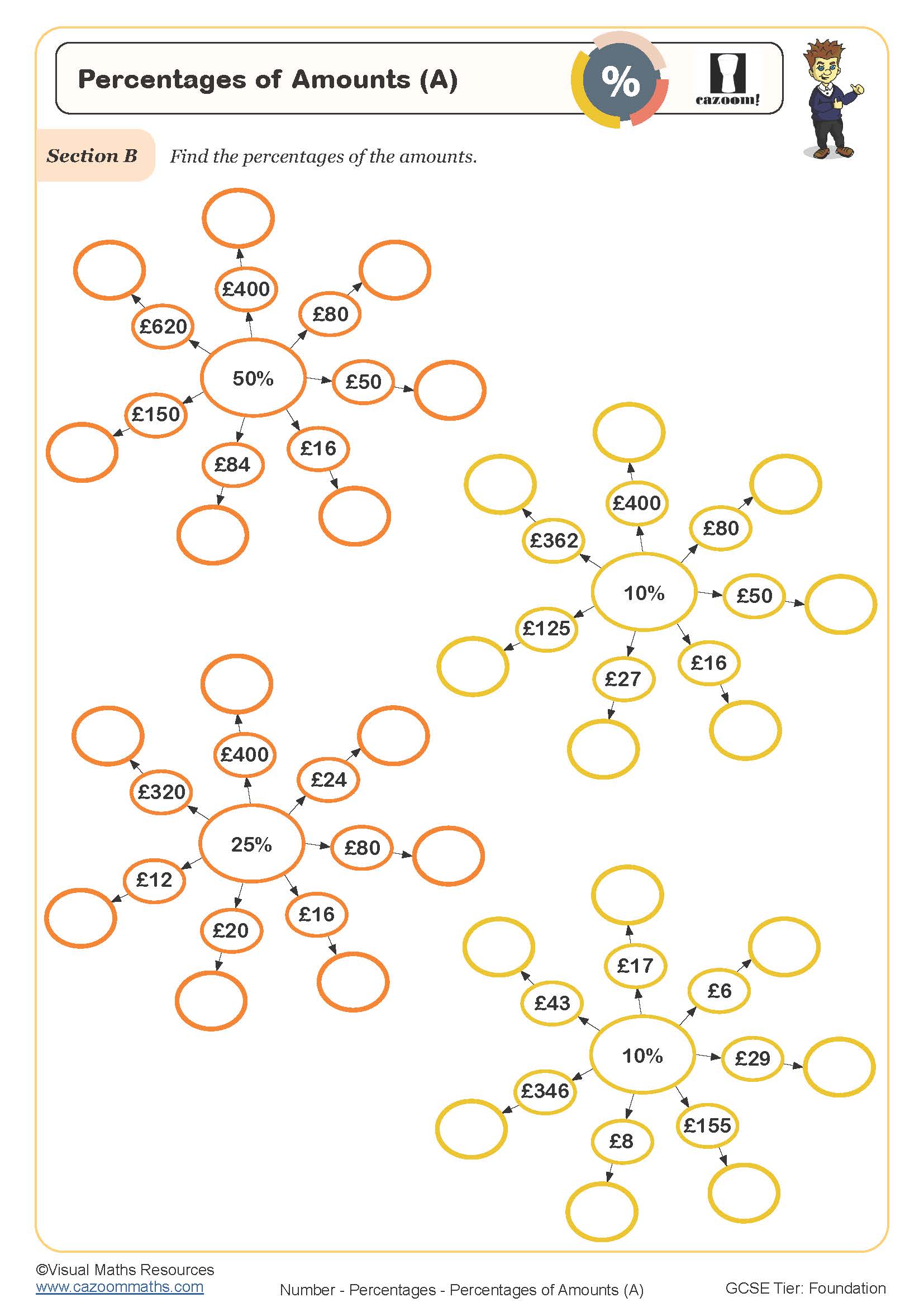
Percentages of Amounts (B)
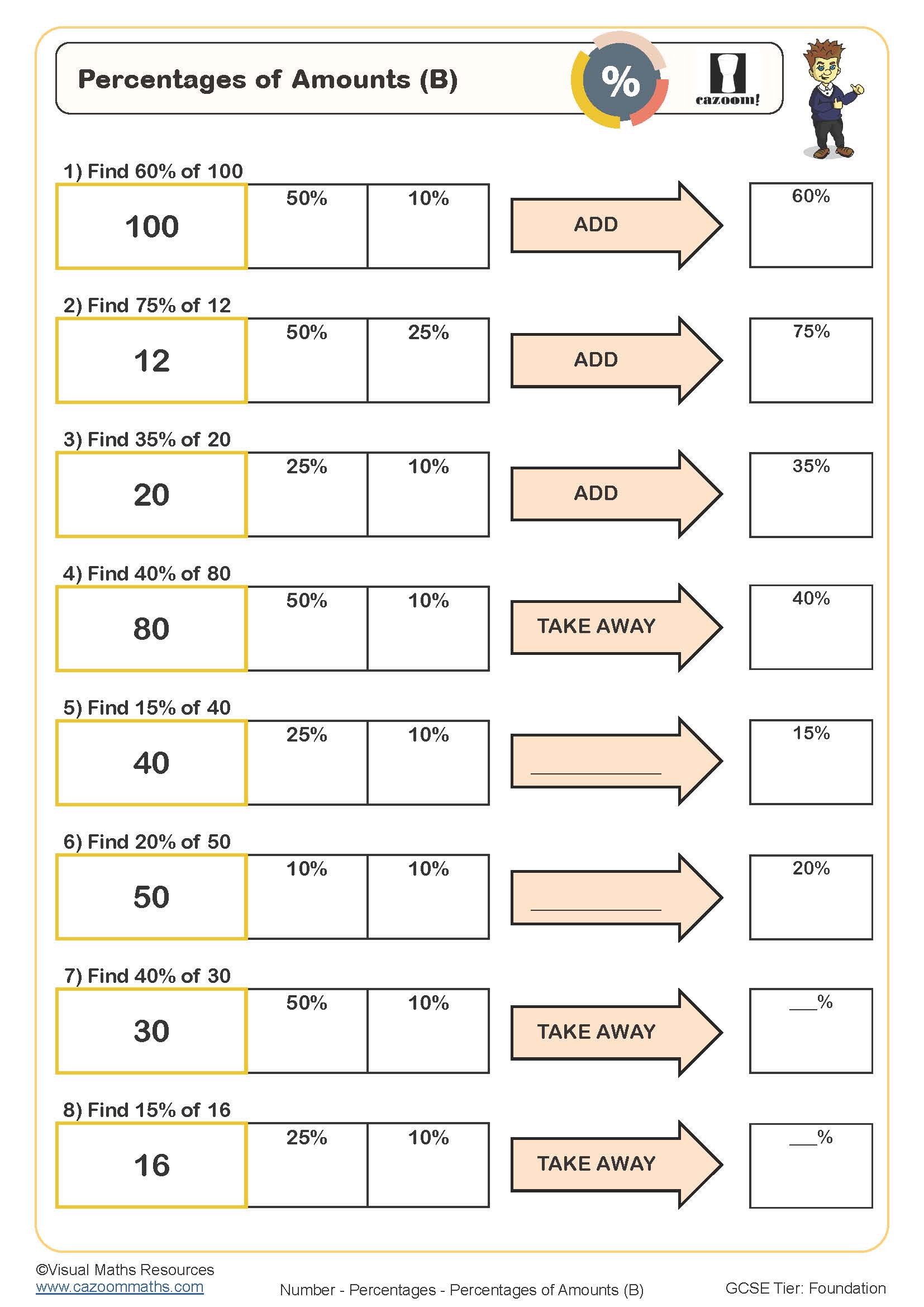
Percentages of Amounts (C)
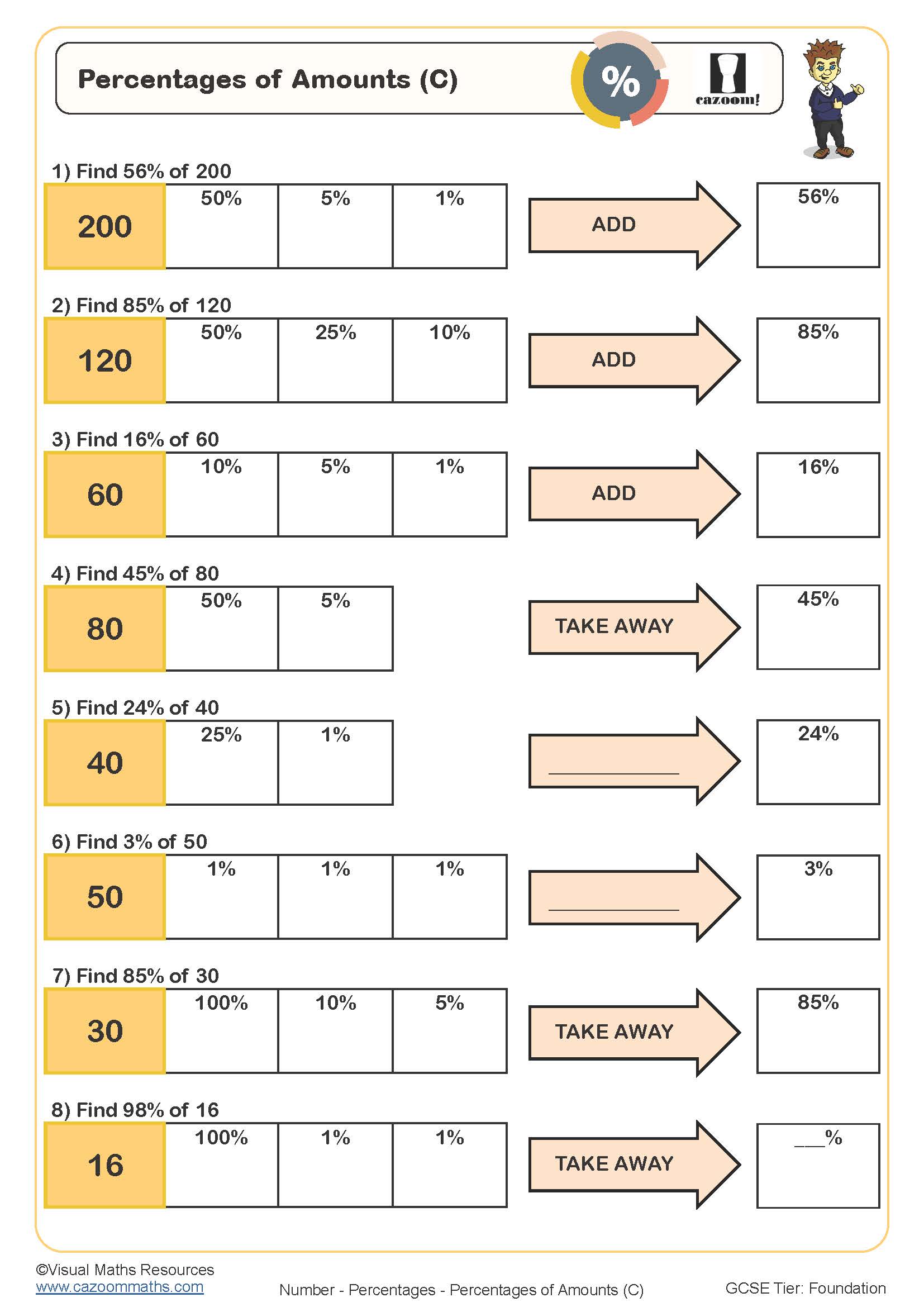
Percentages of Amounts 10 Minute Challenge
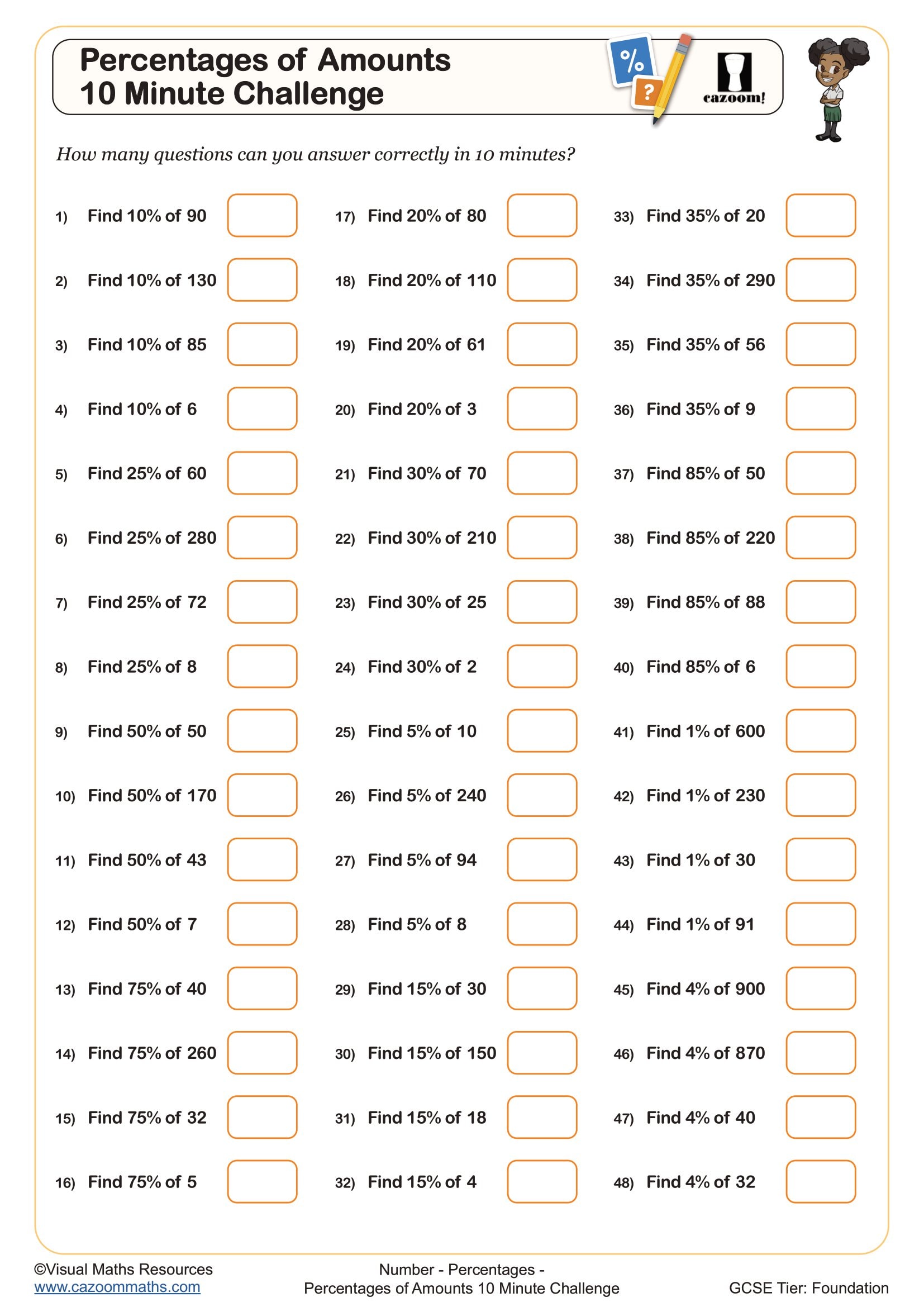
Simple Interest
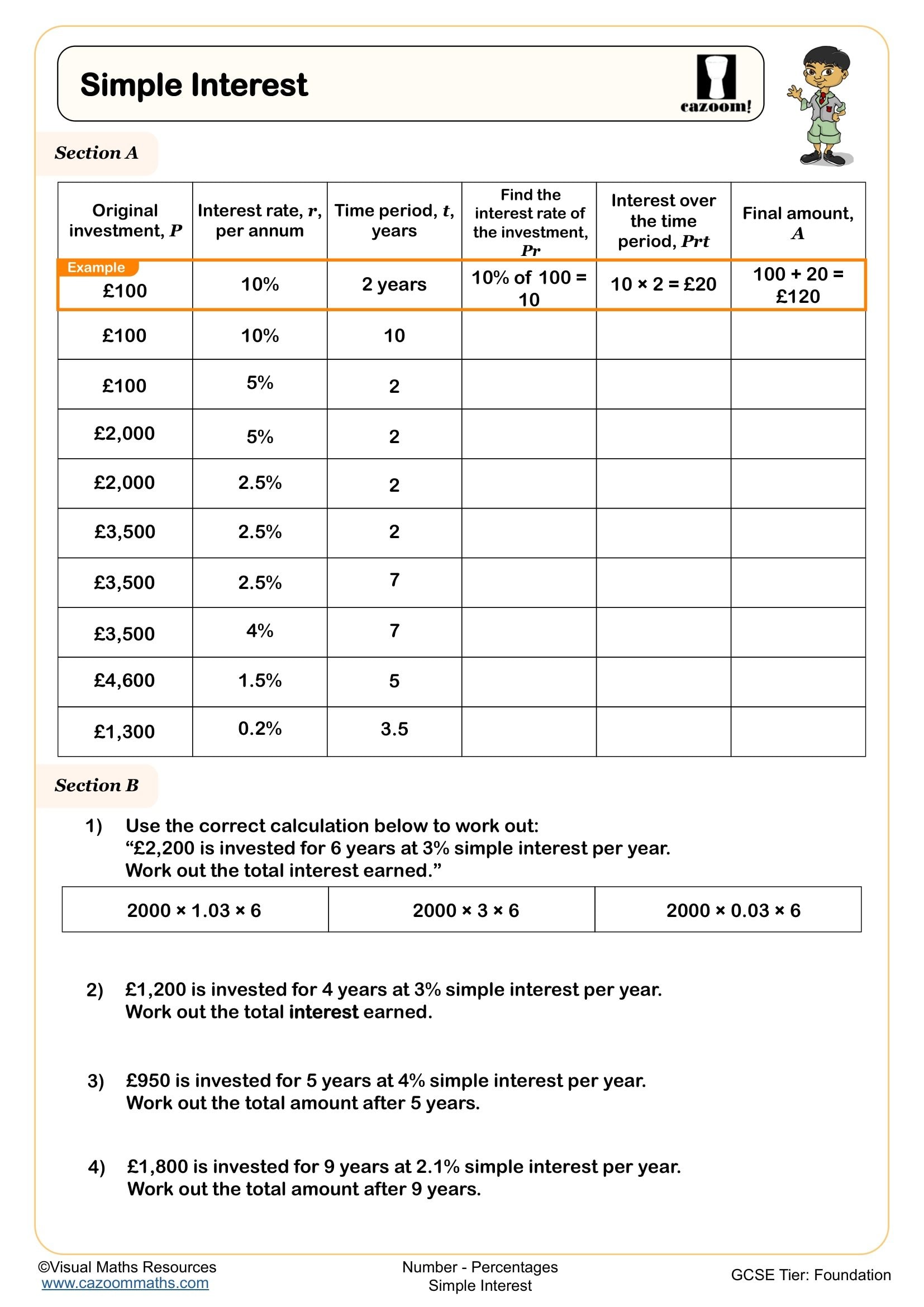
Spider Percentages (A)
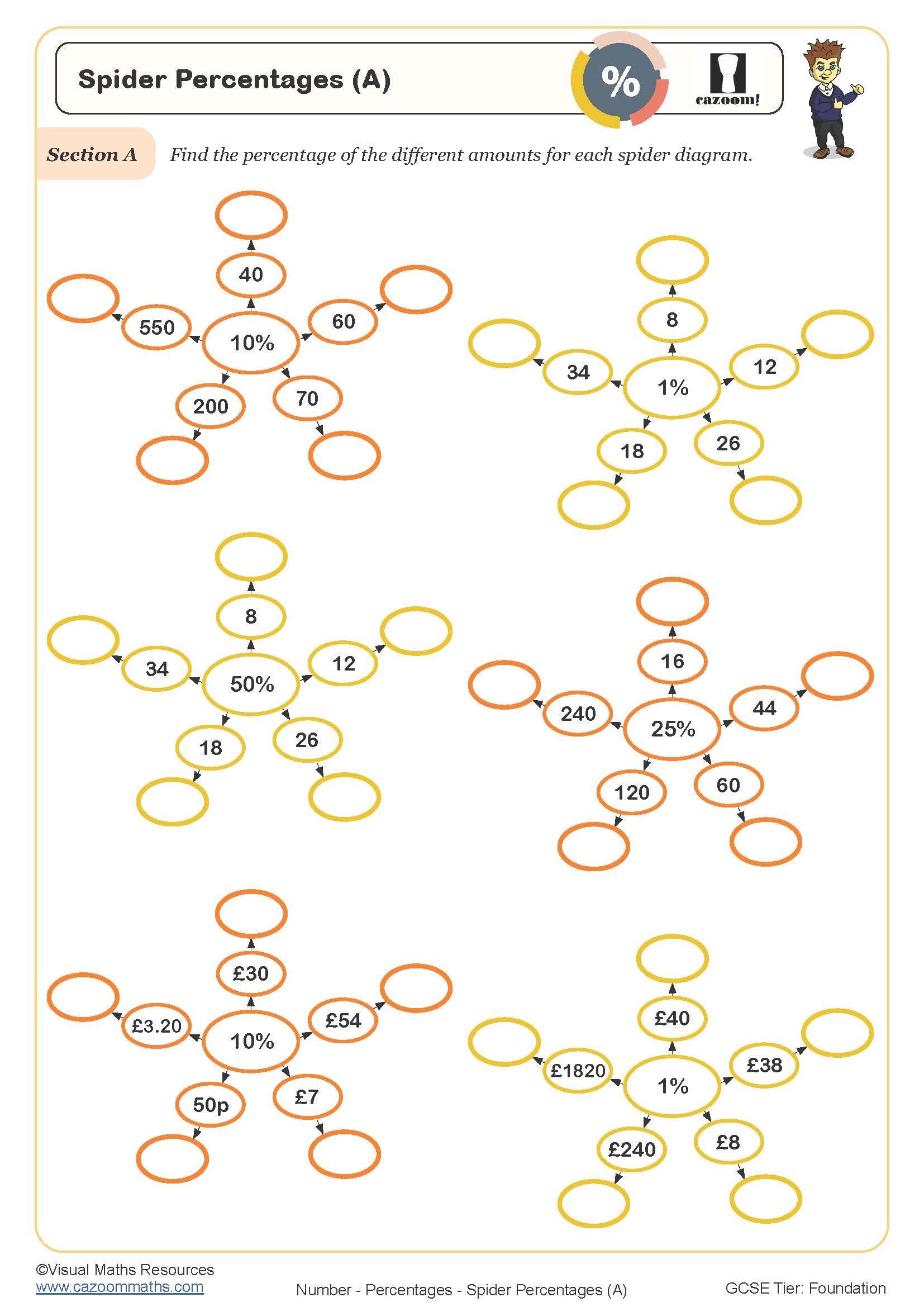
Spider Percentages (B)
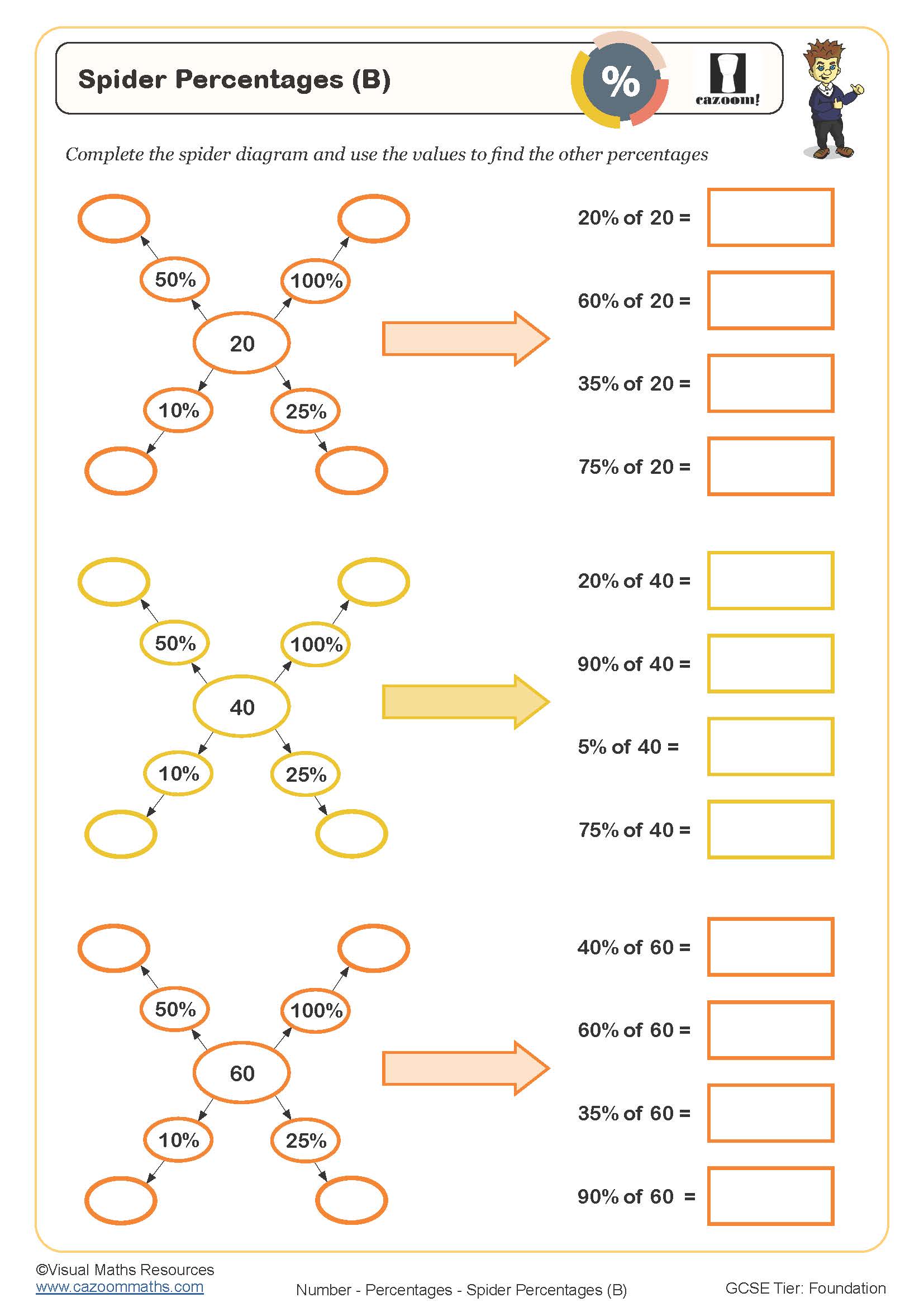
Spider Percentages (C)
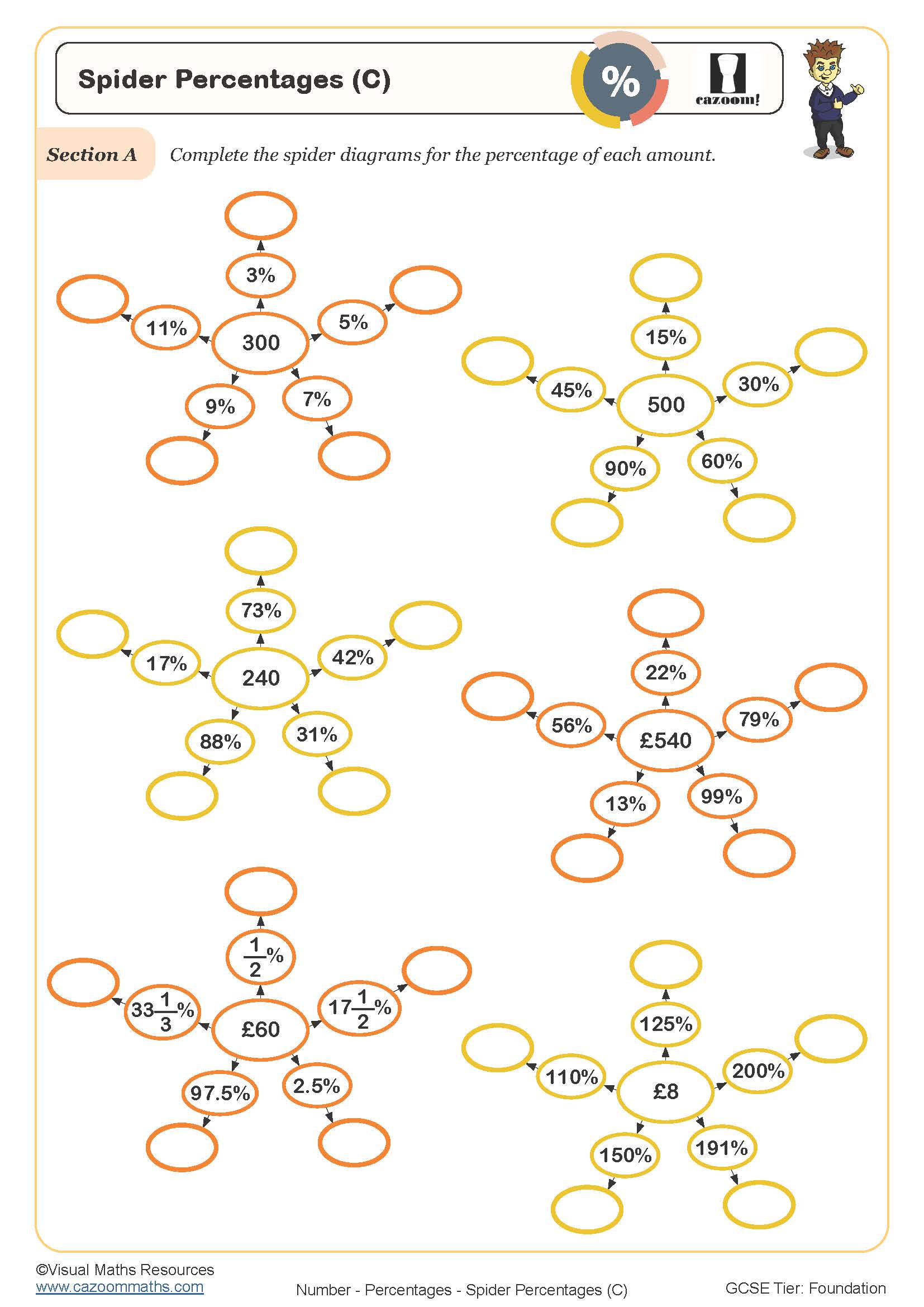
How Do Our Printable PDF Year 8 Percentages Worksheets Help Students Progress?
Understanding percentages marks a crucial milestone in mathematical development, particularly as Year 8 students encounter compound calculations and reverse percentage problems for the first time. The worksheets present a particular learning sequence to teach procedural fluency and conceptual understanding so students do not develop superficial knowledge that results in errors when they progress to more advanced levels. The practice of solving different types of problems helps students develop automaticity, which they need for science practicals, geography fieldwork analysis and business studies coursework because percentage calculations occur often in these subjects. The systematic method enables knowledge transfer between subjects while preventing it from being limited to math classes. When students practise consistently with well-designed materials, they develop the mathematical resilience needed to tackle unfamiliar percentage contexts independently.
Specific learning benefits include:
• Master calculating percentage increases and decreases
• Develops fluency with compound percentage problems
• Strengthens connections between fractions, decimals and percentages
• Tackles reverse percentage challenges confidently
• Improves accuracy in multi-step calculations
• Prepares pupils for financial literacy topics
• Supports cross-curricular mathematical applications
Which Percentage Skills Should Year 8 Pupils Master First?
The progression through Year 8 percentage concepts moves deliberately from concrete numerical calculations through pictorial representations to abstract problem-solving scenarios. Students begin with straightforward percentage-of-amount calculations before advancing to percentage changes and eventually tackling problems that require algebraic thinking. Each worksheet includes worked solutions that reveal the mathematical reasoning process, helping students understand the logic behind each method rather than simply memorising steps.
The worksheets in this collection include:
• Finding Percentages of Amounts — practices calculating basic percentages using mental and written methods
• Percentage Increase and Decrease — develops skills for calculating changes in values systematically
• Converting Between Fractions, Decimals and Percentages — strengthens connections between different numerical representations.
• Compound Percentages — introduces repeated percentage changes over time periods.
• Reverse Percentages — challenges students to work backwards from final values
• Mixed Percentage Problems — combines multiple percentage concepts in context.
• Percentage Change with Calculator Methods — explores efficient calculation strategies using technology.
Why Schools Choose Our Year 8 Percentages Worksheets for Daily Practice
Teachers value these percentage resources because they address the full spectrum of abilities within a typical Year 8 classroom through careful differentiation. The horizontal and vertical progression within each worksheet allows educators to select appropriate starting points whilst maintaining high expectations for all learners. The questions become progressively more challenging as they advance from basic calculations to complex problems that need multiple steps and decision-making processes. The clear visual layout reduces cognitive load, allowing students to focus on mathematical thinking rather than decoding instructions. Teachers who have limited time find the detailed answer sheets useful because they show both the final answers and the complete work, which helps teachers detect student errors when grading. The thoughtful design enables lessons to progress without interruptions so teachers can focus on delivering individualised support to students who need it most.
Everyday Maths: Where Year 8 Students Use Percentages in Real Life
Percentages permeate modern life in ways that directly affect young people's decisions and understanding of the world around them. From social media engagement metrics to environmental data about climate change, percentage literacy shapes how students interpret and respond to information.
• Calculating discounts and comparing prices during seasonal sales
• Understanding smartphone battery degradation and charging cycles
• Interpreting match statistics and player performance in sports analytics
• Analysing nutritional labels for sugar and salt content
• Comparing mobile data usage against monthly allowances
• Evaluating gaming completion rates and achievement unlocks
• Understanding inflation rates affecting the purchasing power of pocket money
• Calculating tips and service charges in hospitality settings